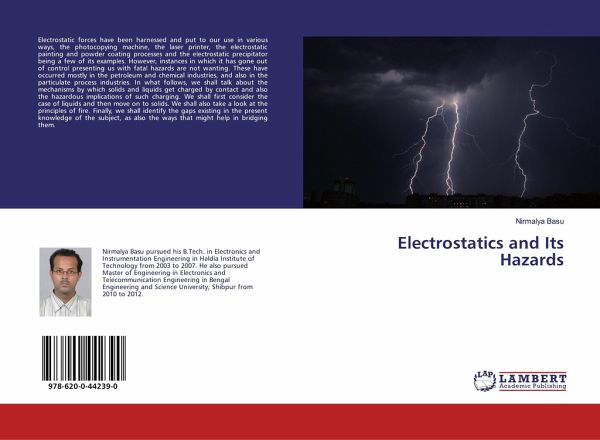
Electrostatics and Its Hazards
Versandkostenfrei!
Versandfertig in 6-10 Tagen
27,99 €
inkl. MwSt.

PAYBACK Punkte
14 °P sammeln!
Electrostatic forces have been harnessed and put to our use in various ways, the photocopying machine, the laser printer, the electrostatic painting and powder coating processes and the electrostatic precipitator being a few of its examples. However, instances in which it has gone out of control presenting us with fatal hazards are not wanting. These have occurred mostly in the petroleum and chemical industries, and also in the particulate process industries. In what follows, we shall talk about the mechanisms by which solids and liquids get charged by contact and also the hazardous implicatio...
Electrostatic forces have been harnessed and put to our use in various ways, the photocopying machine, the laser printer, the electrostatic painting and powder coating processes and the electrostatic precipitator being a few of its examples. However, instances in which it has gone out of control presenting us with fatal hazards are not wanting. These have occurred mostly in the petroleum and chemical industries, and also in the particulate process industries. In what follows, we shall talk about the mechanisms by which solids and liquids get charged by contact and also the hazardous implications of such charging. We shall first consider the case of liquids and then move on to solids. We shall also take a look at the principles of fire. Finally, we shall identify the gaps existing in the present knowledge of the subject, as also the ways that might help in bridging them.












